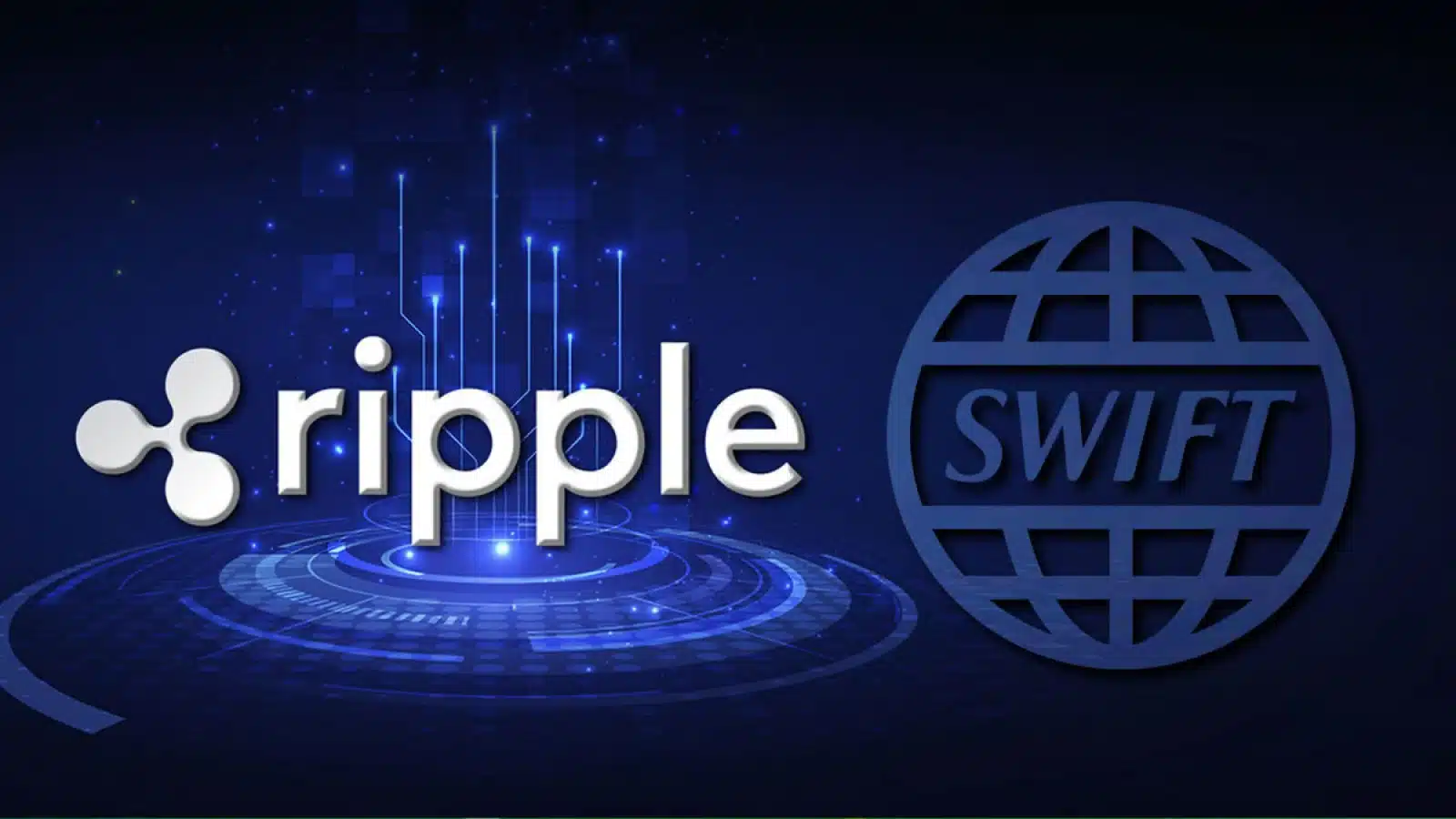- SWIFT volumes drop, XRP quietly emerges as global finance fallback.
- Legal shifts signal XRP integration into legacy financial payment systems.
- Institutions adopt XRPL infrastructure while publicly dismissing crypto involvement.
A new wave of speculation has emerged around the future of cross-border payments as SWIFT records a sharp 15% drop in transaction volume. While official statements blame macroeconomic pressures and geopolitical sanctions, industry observers are pointing to deeper systemic changes.
Market commentator Pumpius (@pumpius) points out that the world of payments is changing behind the scenes. Genius Act and Clarity Act-driven legal instruments are increasingly being considered structural counterparts to facilitate a silent transition out of legacy systems.
These movements indicate that XRP could be positioning itself as a tactical substitute for SWIFT. There is emerging evidence that the Ripple XRP Ledger is making an inroad into the institutional world.
There are now real-world assets worth over $118 million on the network with Wall Street-listed tokenized products like OUSG catching on. Transactions on XRPL are said to be faster, even compared to traditional financial rails popular in other traditional financial systems, causing the attraction of larger entities in the financial markets.
SWIFT’S LAST SUNSET: XRP IS THE NEW CHESSPIECE
As SWIFT’s volumes bleed out, the whispers grow louder:
“XRP is the backup plan.”
They won’t tell you. But the chessboard has already shifted. 👇🧵👀 pic.twitter.com/Ax5gU1KMz5
— Pumpius (@pumpius) July 22, 2025
Also Read: Bitwise ETF Conversion Including XRP Halted by SEC – What is Going On?
According to the same pundit, SWIFT’s fall might not have been a collapse; rather, it might have been a transformation. Instead of replacing them, its infrastructure might gradually adopt Ripple’s technology in the background.
References to Ripple’s corridors as “silent wires beneath legacy cables” have sparked further discussion on how the transition is unfolding.
Ripple’s XRPL Quietly Gains Ground Among Institutions
Institutional use of XRP is expanding without public announcements. According to Pumpius, entities that helped build the SWIFT network are now testing XRPL protocols for future deployment.
These are being undertaken out of the limelight, with prominent firms lining up to reject cryptocurrencies openly while setting up to embrace blockchain technology.
The composition of the XRP as an amoral asset has also added to its attraction. It is not bound to one particular nation and thus offers a solution compatible with the interests of other institutions like the International Monetary Fund and international central banks.
This non-involvement has further enhanced its position as a bridge asset to cross-border settlements.
Although nothing official is yet known about that, the idea that the framework established by Ripple is being integrated into the legacy system acquires plausibility. With the gradual development of the financial system, the application of blockchain-enabled corridors might transform the system of global liquidity management in the future.
As SWIFT volumes stagnate and regulatory structures shift, XRP seems to be positioning itself as a strategic backup for global finance. While the transformation remains silent primarily, the indicators point to a new phase of financial connectivity led by Ripple’s infrastructure.
Also Read: XRP Price to $10,000 Isn’t Speculation, It’s Mathematics – Pundit Breaks It Down

